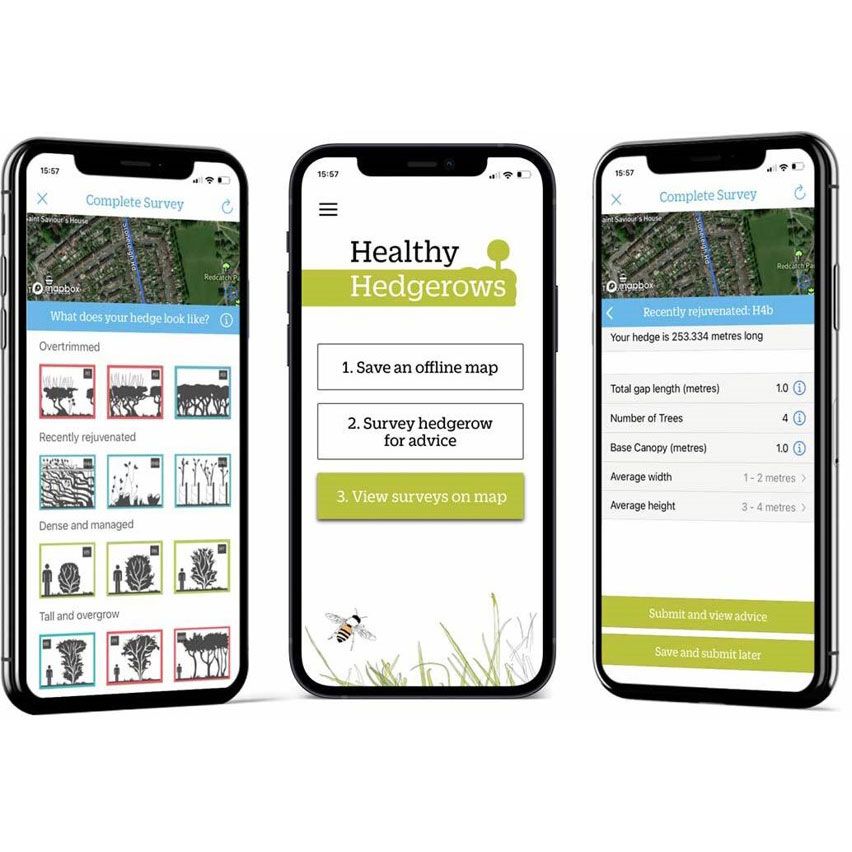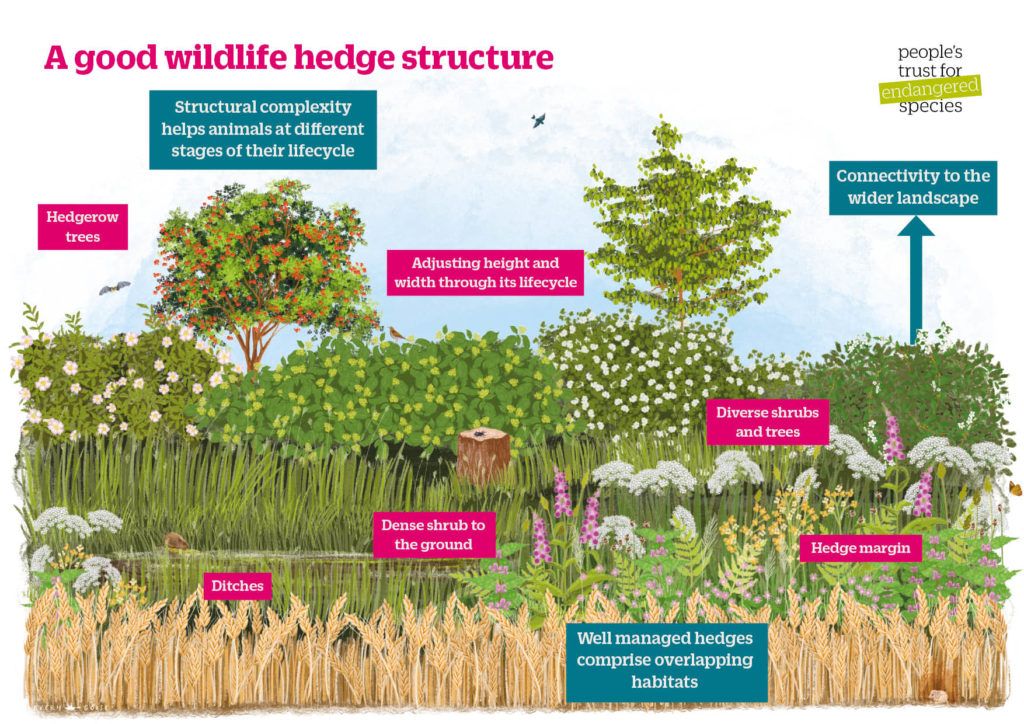The structure of a hedge
From the herbaceous vegetation at the bottom, to the woody shrubs that make up the structure and the trees that tower above the hedge canopy, each hedgerow component contributes important resources to wildlife.
Components of a hedge
Hedgerow trees
Hedgerow trees, especially old trees, benefit birds, bats, invertebrates and more. Trees are important for many bird behaviours, and are used as song-posts and territory markers. Oak and willow trees can support over 400 insect species each and ancient trees can contain dead wood, a rare habitat, home to a number of rare specialist species.
Over half of our priority species associated with hedgerows are dependent on hedgerow trees. Unfortunately, we are seeing the loss of hedgerow trees and also a lack of recruitment of young trees. Current rates of young tree recruitment are less half the number we need to maintain the tree population.
Find out more about hedgerow trees
A diverse shrub layer
Hedges with a greater shrub plant species diversity consequently have a higher diversity of invertebrates and birds. A greater diversity of woody plant species increases the variety and promotes the year round availability of food sources. Native shrubs and woody species provide a better habitat for insect and animal species than introduced ones as more of our native wildlife have adapted to eat them.
Hedgerow height and width
Increasing the width and height of a hedgerow increases the diversity and abundance of wildlife within it. Many farmland birds depend on hedgerows for nesting. Larger and more complex hedges provide better shelter for foraging birds and reduce predation of nesting birds.
Structural complexity
Some wildlife use several hedge components throughout their lifecycle. A song thrush for example, nests in the shrub layer of a hedge, sings from hedgerow trees and eats snails living in the base of the hedge, before swapping to hedgerow berries later on in the season.
Connectivity
The extent to which a hedgerow is connected to other hedges and to the wider landscape influences how useful it is as a corridor for wildlife. Corridors play a vital role for many species that are at risk from habitat fragmentation, as they allow movement between remnant habitat patches. Dormice, bats, hedgehogs, birds and butterflies can all depend on hedgerows for dispersal.
A hedge margin
A margin between the base of the hedge and any cultivation or disturbance will protect the roots of the shrubs and trees. This area can also be very herb rich when it is protected from drifting spray and fertilizer. Birds, small mammals and insects all use this valuable habitat. The larvae of many butterflies and other invertebrates feed on the grasses and herb layer in the margin.
Hedge base vegetation
Dense vegetation at the base of a hedge is crucially important to wildlife. This includes nesting birds, insects, reptiles and small mammals. The vegetation at the base of a hedge can grow thin through herbicide spraying, over grazing or shading, if the hedge has become over-grown. In the latter case, laying the hedge will help to restore it.
Health-check your hedgerows

The Healthy Hedgerows survey provides instant feedback about the health of the hedge and bespoke management advice. The data that you contribute helps us to understand the overall health of hedgerows at a national scale so that we are able to direct our conservation work. Learn more:

